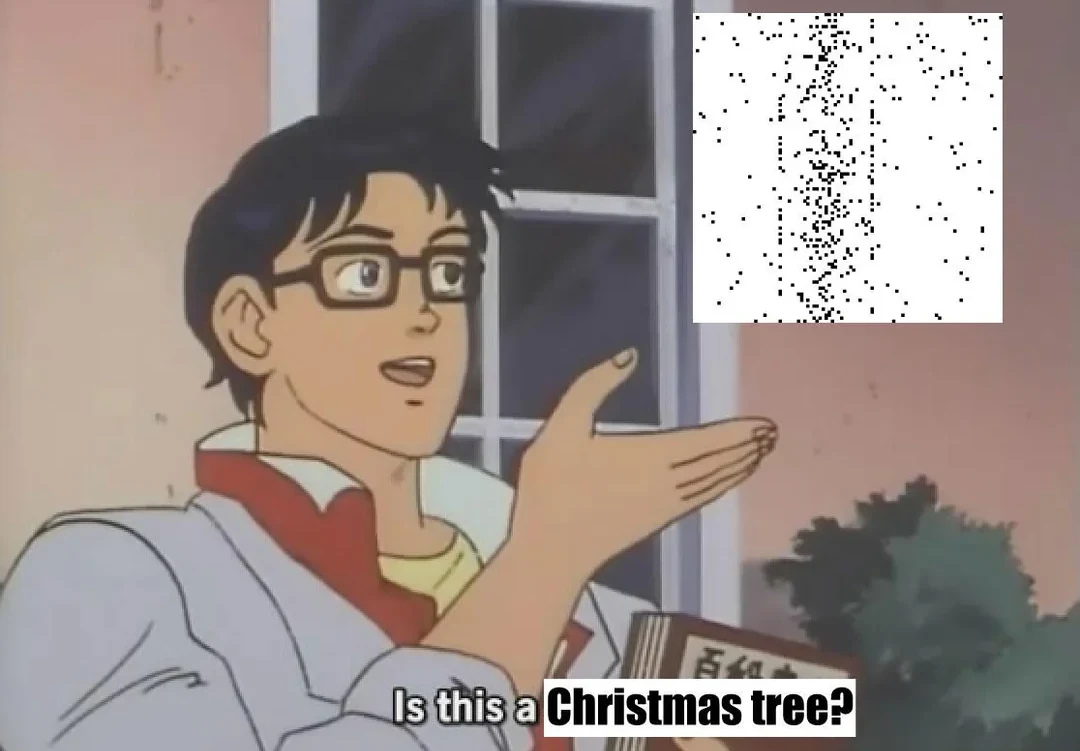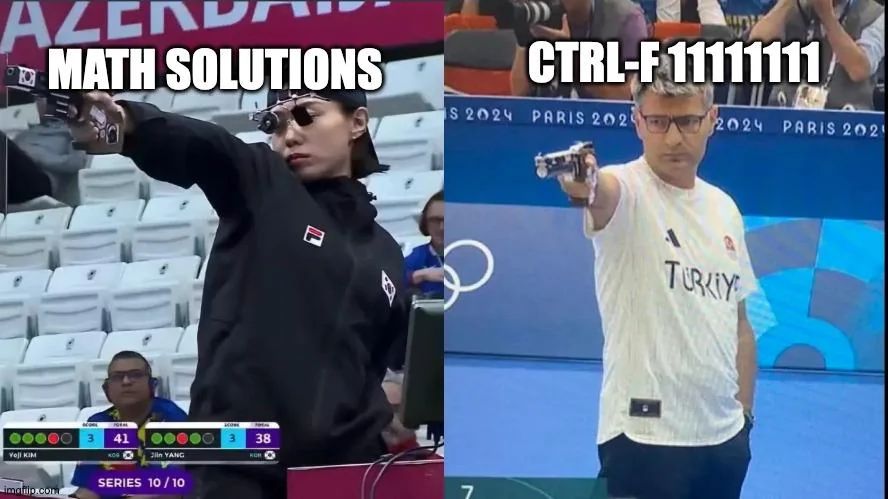Robots & Christmas Trees

Another fun challenge for us - especially part 2, lol.
So, we're in a bathroom at the Easter Bunny's HQ (because why not) and we are witnessing a bunch of robots proceeding on straight lines on the tile floor. Representations of a robot are like the following:
p=0,4 v=3,-3
p=6,3 v=-1,-3
p=10,3 v=-1,2
p=2,0 v=2,-1
p=0,0 v=1,3
The P coordinates are the initial position; the V values indicate the movements on the X and Y axes for each step the robot takes.
For example, the first robot on 0,4 moves to 3,1 after one step. After 2 it ends up not on 6,-2 - because we're on a 11x7 grid with positive values only - but on 6,5: when reaching the north edge, the robot wraps around the grid and comes back on the other side.
The goal is to
- find the robots' positions after 100 seconds
- divide the grid into four quadrants
- count the robots for each quadrants and multiply the counts - this is our safety factor and the answer to our puzzle.
Speaking of the quadrants, the catch is that we're excluding the middle lines, horizontally and vertically - so the example robots appear in this configuration after 100 iterations:
..... 2..1.
..... .....
1.... .....
..... .....
...12 .....
.1... 1....
Note that the 2s represent cells with two robots together, since
robots are good at navigating over/under each other (due to a combination of springs, extendable legs, and quadcopters).
The more you learn, I guess 🤓
Onto my solution, the main function I wrote is to compute the a robot's final position after 100 steps, based on its initial coordinates and velocity. This is fairly simple if we exploit some maths and we are careful with the wrapping rule:
export function moveRobot(
robot: Robot,
seconds: number,
hiX: number,
hiY: number
) {
const { x: posX, y: posY } = robot.position;
const { x: vX, y: vY } = robot.velocity;
// (value % max) => remainder.
// Adding max ensures the value becomes positive if it was negative.
// Taking % max again ensures the result stays within the range [0, max - 1].
const wrap = (value: number, max: number) => ((value % max) + max) % max;
return new Coord(
wrap(posX + vX * seconds, hiX),
wrap(posY + vY * seconds, hiY)
);
}
After this, here's a function to compute all robots' positions:
function moveAllRobots(
robots: Robot[],
hiX?: number,
hiY?: number,
seconds = 100
) {
const newRobotsPositions: Robot[] = [];
robots.forEach((robot) => {
const finalPosition = moveRobot(robot, seconds, hiX!, hiY!);
newRobotsPositions.push({
position: finalPosition,
velocity: robot.velocity,
});
});
return newRobotsPositions;
}
And finally, the computation of the safety factor, splitting the robots into the four quadrants:
function calcSafetyFactor(robots: Robot[], hiX?: number, hiY?: number) {
const midX = Math.round(hiX! / 2) - 1;
const midY = Math.round(hiY! / 2) - 1;
const quadrantCounts = { q1: 0, q2: 0, q3: 0, q4: 0 };
moveAllRobots(robots, hiX, hiY).forEach((robot) => {
const { x, y } = robot.position;
if (x < midX && y < midY) {
quadrantCounts.q1++;
} else if (x > midX && y < midY) {
quadrantCounts.q2++;
} else if (x < midX && y > midY) {
quadrantCounts.q3++;
} else if (x > midX && y > midY) {
quadrantCounts.q4++;
}
});
return Object.values(quadrantCounts).reduce(
(product, count) => product * count,
1
);
}
I submitted my answer thinking ‘I bet in part 2 the iterations will not be 100 but 100 million trillion gazillion - sure as hell I'll have to come up with some wizardry to get by in a decent time’… except that would be way too predictable, wouldn't it? 😉
Instead, in part 2 we had to let the robots roam freely in the bathroom, until they form nothing less than a Christmas tree 🎄

So far I haven't mentioned that the real input covers a 101x103 grid, so the robots would take more than 10000 steps to cover all positions.
Initially, I thought there was no way out of printing all the dispositions second after second and checking one by one to find the Christmas tree… then I had an intuition regarding the alleged shape of such tree: whatever the inclination of the branches, whether it's empty or filled, basically whatever shape this tree has, there should at least be some straight lines, correct?
Well, I was right! It was enough to keep moving the robots until I found an horizontal line of consecutive # - and that was it!
if (line.includes('##############################')) {
console.log(`Christmas tree found after ${seconds} seconds!`);
break;
}
Yes, I do feel a bit dirty for coming up with such a trick… but hey, it worked! 😁